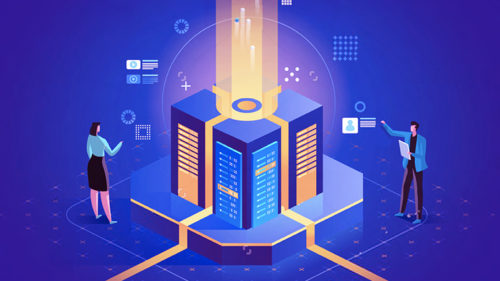Fear Keeps You Employed, Samurai
• April 20, 2021

I remember the first time I watched the movie ‘Hackers’ – one sequence still sticks with me today:
“We are Samurai – the keyboard cowboys; governments and corporations need people like us.”
You are Samurai and your employer needs you for the peace of mind. Why?
Virtually every organization today relies on technology for everything from banking to human resources to customer management to product development – but within each organization, very few people deeply understand how these technologies operate and integrate to “make it all work.” The expectation from the executives at the top of your organization is that the technology they rely upon for those mission-critical functions is “secure” and “works” – though they rarely (if ever) understand the sheer magnitude of the challenges and complexity required to meet that expectation. For that, they rely on you, Samurai – to figure it out and to make it work.
And despite your valiant efforts, Samurai, the result of this misalignment is as predictable as it is pervasive: your organization’s technological infrastructure begins to deteriorate. Patches and quick fixes replace global, future-resilient solutions. Professional development takes a back-seat to simply “making it all work.” Your technology infrastructure falls behind that of the “market leaders” – and soon, it becomes a hindrance, a limitation to growth. But the executives, content that everything is “working”, continue to under-invest in their technology – perpetuating the vicious cycle that inevitably leads to the very failures (security breaches, system failures, inability to remain competitive with the market) they want so desperately to avoid.
The digital ecosystem as we know it has evolved at an unprecedented rate – from curiosity to novelty to mission-critical infrastructure in the span of about two decades. Those senior executives began their careers in a world where one Samurai was sufficient to “make it go” and two was a luxury; those perceptions have not evolved to keep pace with the reality of our digital-centric world.
Technology has advanced exponentially in terms of performance, stability, and scale – and the possibilities with it. We are in the midst of a data explosion; in the past two years, more data has been created than in all of human history before it. Data has become the lifeblood of every organization – with winners and losers determined by how efficiently, effectively and pervasively they can refine data into a competitive advantage. That system – and the entire enterprise it supports – relies on you, Samurai. And deep down, your senior leadership knows that you are the lynchpin, holding it all together. Making it go. These realities are keeping your senior leaders up at night and their fear keeps you employed, Samurai.
And if you enjoy employment, the future looks bright. The data explosion is just beginning and will only accelerate, as:
- Almost everything is data now (or someone is looking for a way to make it data)
- The total volume of data doubles every 18-24 months
- We don’t delete (or even summarize) data for more efficient storage because we aren’t sure what we might need later – we just keep it somewhere
- Data siloes are being collapsed, but not deduped
- Efforts are focused on making data useful through visualization and analysis
The challenge of maintaining a technology stack while the world (and your organization) moves from “Big Data” to “WTF Data” will occupy the nightmares of organizational leadership for the foreseeable future. And while your senior executives don’t understand what it takes to keep everything working, they do know what happens when a Samurai falters. In 2020 alone, there have been (at least) 3,950[1] confirmed data breaches, with the average breach costing an organization $3.85M[2]. Executives have witnessed the organizational, legal and financial fallout for data failures – and they expect you, Samurai, to make sure their organization isn’t the next victim.
Your task is daunting – and it is only getting more complex. The scale of technology alone makes performance, cost, locality, accessibility, and permissions astronomically more difficult. Compounding the complexity are the effects of the COVID-19 pandemic (a remote and increasingly mobile workforce, a rapid transition to online commerce for many organizations, the addition of brand-new virtual technology solutions to an already-strained stack). All the while, data volumes continue to accelerate. Your competition continues to innovate. The strain on your current technology infrastructure increases.
Just a few examples of the evolving reality that is making things tough for Samurais:
- Ransomware as a $B industry
- IoT services that cover pollution, parking and physical security
- 5G and its disruptive effects on all technology assumptions for the next decade
- Cloud services like virtual call centers with AI based representatives
- Self-driving cars
- Digital currency
If this situation sounds both familiar and hopeless, there is a solution. Mavenspire offers a full suite of SMARTaaS solutions to give your Samurai the support they need to make your technology work better today – and tomorrow. Our team of world-class IT experts isn’t a replacement for your Samurai – but rather a force multiplier. We’re constantly learning about new and emerging disciplines like vulnerability mitigation, multi-cloud storage architectures, backup and cyber recovery, data governance technologies, and robotic process automation. We use that knowledge, coupled with your desired business outcomes, to craft solutions to your organization’s challenges today and position your organization to capitalize on your opportunities tomorrow.
Technology is only becoming more central and more essential to the success of your organization – so if you’re a Samurai worried about holding the line, or an executive worried about what happens if things stop working, get in touch with us at https://www.mavenspire.com.
[1] Source: Varonis.com
[2] https://www.ibm.com/security/digital-assets/cost-data-breach-report/
